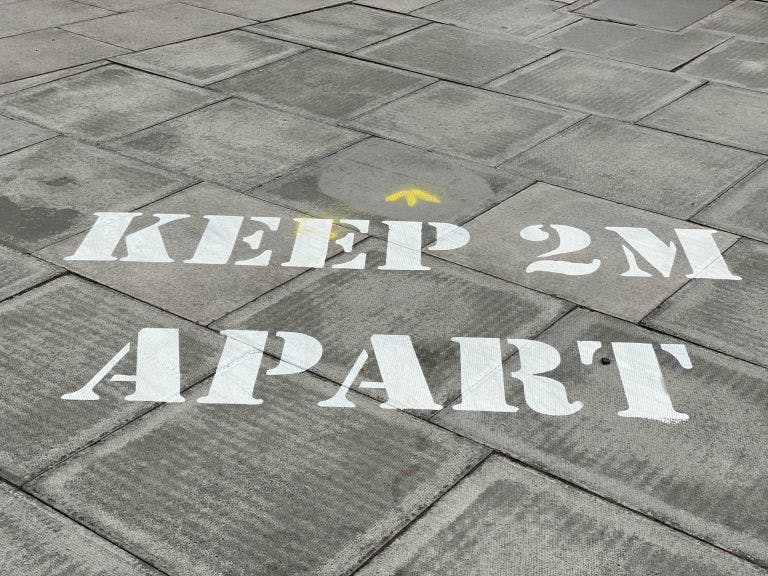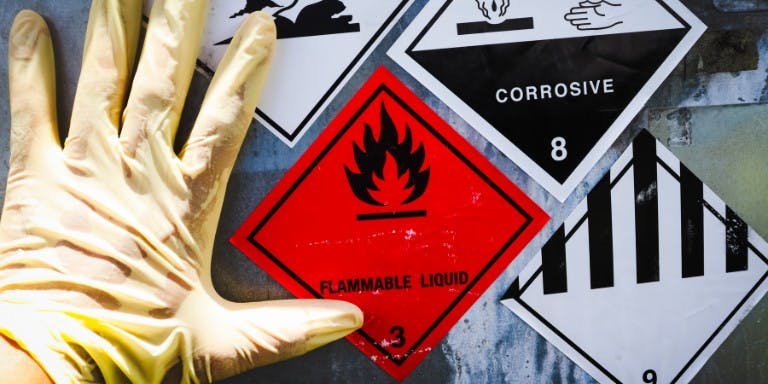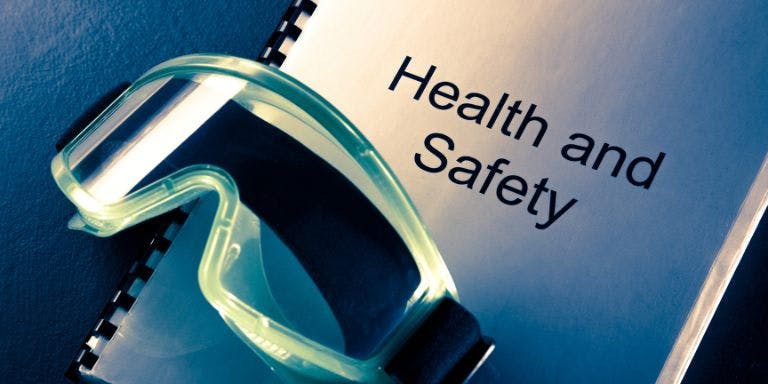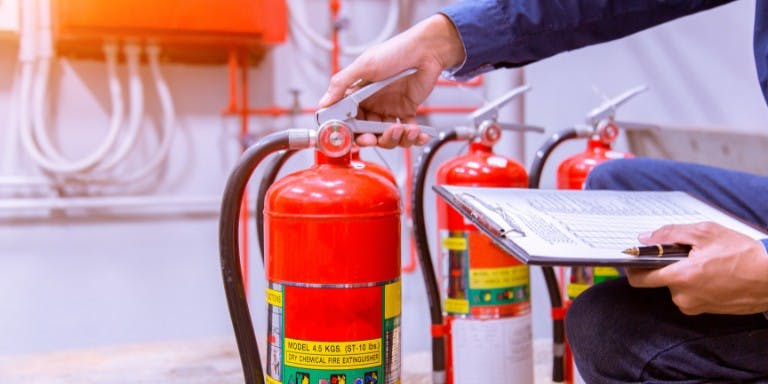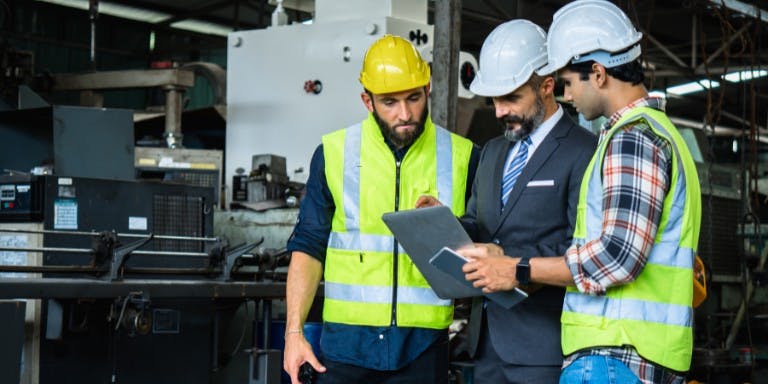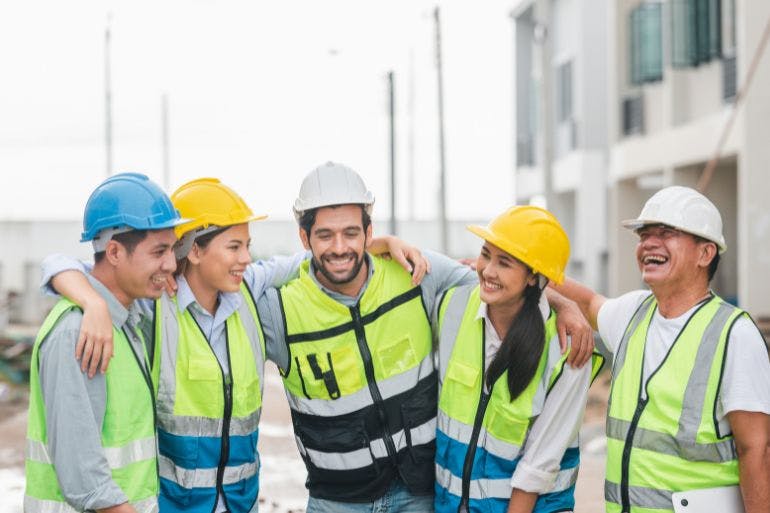First published on Monday, June 8, 2020
Last updated on Wednesday, June 19, 2024
After the coronavirus outbreak, many businesses are now either letting staff work from home. Or they’ve furloughed them while there’s less work.
This is because it’s government advice to follow lockdown rules. So, for essential workplace health & safety needs, to control the outbreak we must all do our bit. This is because it’s government advice to follow lockdown rules. So, for essential workplace health & safety needs, to control the outbreak we must all do our bit.
However, some businesses are still open. And soon, many more businesses will return to a new type of daily routine—lockdown limitations will start to lift over the coming months. So, what does that mean for your organisation and the employees of the world? What safety steps should you take?
Well, there are health & safety procedures you can familiarise yourself with right away. And don’t forget, there’s our coronavirus resource hub you can turn for all the advice you could need for your business.
You can also read this guide, which explores the topic further.
How social distancing works
So, why is it effective at controlling the outbreak? Well, one of the most likely ways to catch coronavirus is from someone else.
If another person has coronavirus and coughs or sneezes near you, droplets can pass to you in your eyes, mouth, or nose.
To limit the chances of that happening, you should distance yourself from people at all times.
And that reduces the risk of becoming infected. Which is why it’s also important to wash your hands regularly, to remove any droplets from your skin.
The problem is many businesses get very busy, with employees and sometimes customers. In response, one of the most effective techniques you can use is the two-metre rule.
Let’s take a look at this.
Current advice on social distancing
There are three main regulations from the UK government:
- Go outside your home only for food, health reasons, or to work.
- If you’re outside, stay at least two metres (that’s six feet) away from other people.
- You should wash your hands thoroughly on regular occasions—for at least 20 seconds, using lots of soap.
So, while out and about, you should stay at least two metres (six feet) away from other people.
And if you’re at work, you should try to take the same approach.
But with a return to working environments upcoming, how can you ensure these rules are maintained at your business?
As you know, it’s important you comply with public health legislation—you have a duty of care to your employees.
And the UK government has advised you to allow staff to work from home—where possible. In fact, you should take as many steps as you can to support homeworking.
But if that isn’t possible and staff are in work, or you plan to bring staff back over the coming months, you need to keep in mind the two-metre rule.
So, you should look to put in place a social distancing procedure in your business. And staff should follow your rules.
For all in-work tasks your employees are completing, you should minimise social interaction.
If it’s not possible to follow the government’s advice, and social distancing is difficult to manage, you should consider leaving an employee remote working or on furlough.
Remember, the Job Retention Scheme provides your employees with 80% of their monthly wage—if you make a furlough claim for them.
Bringing employees back to work after lockdown
You can check the UK government’s current guidelines on this. But we’ll also update you on the lowdown when the official updates arrive.
But it’ll be difficult for many businesses, as health & safety requirements may stop normal activities from taking place.
There are measures at work that can help social distancing. These are guidelines right now, but you can add to your list of procedures wherever you like. Such as:
- No hot desking: This is where multiple employees use the same computer equipment over the course of a day—such as in call centres. Obviously, stopping this will limit the spread of the virus.
- Limit lift usage: Lifts will have to remain half (or completely) empty. Although this may present an issue for employees looking to get to the top floors, if you have a staggered workforce return it should limit problems.
- Ban group meetings: This may be a difficult one for businesses, but it could be an important step—you’ll have to get creative with your meetings. So, the standard meeting room may have to stay empty for now. You could try group calls to get around the issue.
- Use sticky tape as social distancing signs: In more crowded areas at work, such as around the photocopier or water cooler, you may want to put tape on the ground. This would be to indicate what precisely a two-metre gap is. It may prove useful as staff can easily forget social distancing if they’ve nipped off for a quick coffee.
- Use posters: Place social distancing posters around your working environment as a regular reminder to employees. It can prevent a useful reminder for staff as they adjust to their return.
- Enforce room limits: Put in place a rule that means employees (and/or customers) don’t crowd into an environment. You can use, for example, a limit of three people in a room at a time. You should carry out an investigation of your working environment to decide on the right numbers.
- Use protective screens: This is useful for customer facing roles (there’s more on that topic further below), but the use of a Perspex screen—or barriers—will help to maintain social distancing.
- Stagger the return of employees: This’ll help stop a flood of anxious employees back into your workplace. If staff can continue remote working, you may want to leave them doing so. And first return employees who have to be in work.
Ultimately, you should assess your working environment and make decisions on what the best route is for your business.
Just remember, it’s important to clarify the two-metre (six feet) rule.
And to take steps to make sure your employees follow your guidelines while they’re at work.
How to keep employees safe at work post-coronavirus lockdown
It’s your duty of care to protect your employees. So, what’ll happen when you get the green light to return to work?
Workplace H&S after lockdown is, of course, remain a high priority. The approach you can take to maximise health & safety procedures is:
- Pay attention to government and public health guidance.
- Work with your health & safety teams to develop a safe working environment.
- Ensure your employees are all aware of what strategies you have in place.
- Review your working environment and consider whether a two-metre distance is possible to maintain.
- Take steps to work around common social requirements at work, such as meetings and lunch breaks in a canteen.
- Continue the application of hygiene measures to limit the spread of the virus.
- Ensure the use of proper PPE at work. You should review your business requirements to decide what may, or may not, provide protection for employees. Common PPE includes:
- Gloves.
- Masks.
- Hand sanitisers.
- Eye protection.
- You should also keep in mind the mental health issues coronavirus has caused, such as anxiety attacks and depression. Employees returning to work may be stressed and could require additional support in the months ahead.
Based on the above, it’ll be essential to have a reintroduction process for your employees.
You should train managers to offer support—and remind staff to pay attention to the new health & safety rules you have in place.
Although we’ll potentially return to work over the coming weeks, measures will still be in place to limit the risk of further coronavirus outbreaks.
In the UK, many employees will return to work in open plan offices—a trendy form of office that became popular in the early 2000s. It removed the cubicles of the 1990s to encourage teamwork.
Which now, unfortunately, poses a bit of a problem. Your business will need to remain wary of further outbreaks upon returning to work.
One of the biggest threats to health & safety on return is if an employee tests positive for coronavirus. If they do, the employee should self-isolate. And you can decide to:
- Return your employees to remote working.
- Furlough any employees for the time being.
- Review your health & safety procedures and heighten precautions.
Ultimately, it’s going to be a development your business will have to measure. And you’ll need to remain vigilant and react, based on the government’s guidelines, when appropriate.
Bringing employees back with underlying health conditions
It’s important to particularly think of effective ways to support employees with underlying health conditions. These can include:
- Asthma.
- Diabetes.
- Heart disease.
- Respiratory conditions.
- Those with disabilities.
The government currently advises they work from home. So, you should continue with this option. Or to furlough these members of staff.
You can also consider redeploying the employee in a new role that limits their health risks.
Remember, if you don’t take reasonable steps to address this it may come across as discrimination under the Equality Act 2010.
So, you should review the case of each employee to gain an understanding of the best approach to take.
What if an employee’s job requires close contact with the public?
There are steps you can take to limit the possible spread of coronavirus at work.
And you should train staff to understand how to deal with customers in close proximity. Some of the steps you can take are:
- Promoting regular handwashing—20 seconds a time with soap and warm water. Staff should perform this often. And as a business, you should make it clear where staff can do this.
- Provide hand sanitisers from dispensers to promote a sound cleaning routine.
- Display posters around your workplace to encourage the above.
- Regularly cleaning surfaces and/or objects with disinfectant. Where appropriate, you m
- ay need to add efficient air filters to increase ventilation.
- You may want to put in place protective screens to shield employees and customers—this can already be seen in many supermarkets here in the UK.
- Provide paper tissues and closed bins to dispose of waste.
- Provide training so that employees stick to the government’s social distancing regulations.
In short, you should take as many steps as possible to protect your employees.
And make sure they stick to the current regulations. Which will mean avoiding behaviour we may normally think of as friendly or professional—such as, avoiding handshaking. Or handling a customer’s goods with protective gloves.
You should also consider the mental health of employees in customer facing roles. There’s likely to be an increase in anxiety and depression. Which can affect their ability to work.
If you have an employee struggling with these issues, you could always place them in another role. At least for now. Which you’ll need to discuss with them and arrange prior to their return—you’ll need their agreement to go ahead with that change.
But, for example, if they want to move away from their normal customer facing requirements in a supermarket, you could offer a warehouse role.
We can help your business return to work
Across the UK, businesses have setup homeworking, they’ve furloughed staff, or have limited running during the day.
Are you wondering about the next steps? We can help you move in the right direction. We’re happy to help: 0800 470 2432.

